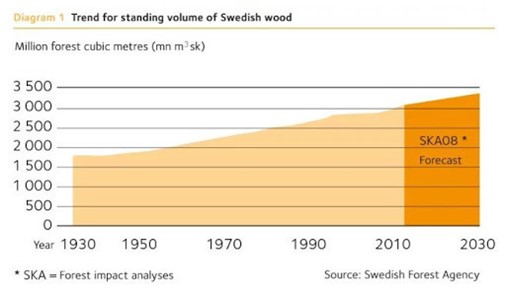2022 Regional Sweden – Sweden a land of trees that also produces 80% of its domestic food and beverages
Home for our next Regional event
Sunday, Oct 09, 2022
On Thursday, December 1, 2022 the Forum moves to Sweden for our next regional event. Here we take a look at the agriculture in a country that is also known for its forestry.
Sweden is one of the smaller national food markets in the European Community (EC), with a population of just 8.9 million. About 80% of the nation’s supply of food and beverage is produced domestically, with imports making up the remaining 20%. The import proportion is far higher—more than 70%—for fresh fruit and vegetables.
In contrast to the significantly bigger forestry area, Sweden’s arable land only makes up 2,800,000 ha, or roughly 7% of the country’s total land area. The temperate environment is good for agriculture because it allows for the growth of high-quality fruits, vegetables, and berries. Cold winters prevent the infestation of many crop pests, and mild summers with long days of sunlight. The fact that farmland in Scania in the south has a growing season up to 100 days longer than farmland in the far north, even though agricultural circumstances vary greatly between locations, demonstrates this. Cereals, primarily barley, oats, and wheat, as well as grasslands, make up the majority of the crops grown in Sweden. Cereals are planted on approximately 40% of arable land.
The Swedish government has actively promoted organic farming since the early 1990s, which has led to a steady increase in the amount of land used for organic farming. In recent years, numerous significant market participants from the retail, wholesale, and industrial sectors have vowed to support a wide array of organic food items.
Notably the woodlands make up a large portion of Sweden. For the country’s economy, forestry is crucial, and most Swedes link closely to forests and forestry activities. Just 1% of the world’s commercial space is held by Sweden. Nevertheless, it contributes 10% of the sawn timber, pulp, and paper traded on the international market. Additionally crucial to reducing climate change are forests and forestry. A substantial amount of biomass may be transferred from Swedish woods due to their high rates of productivity and low rates of natural disturbances, which allows for the avoidance of emissions from fossil fuels and other emission-intensive products like steel and concrete. Men and women can both find employment through it, particularly in rural areas.
Moreover, an interesting historical fact would be that many forests were significantly over-utilized in the 18th and 19th centuries for farming, housing construction, fuel wood, charcoal for the iron industry, and later as a supply of logs for timber and pulping. Forest recovery was hampered by cattle grazing there. It is notable to highlight that the first Forestry Act, which mandated owners to replant after harvesting, was approved in 1903 following years of political debate about the deteriorating condition of Swedish woods. Since then, the Forestry Act has undergone numerous revisions, and it now strikes a balance between social, ecological, and commercial concerns. After that, it was necessary to plant a new tree for every one that was cut down. Additionally, the legislation set a restriction on how much timber may be cut down.
For more information you can check out the following websites:





